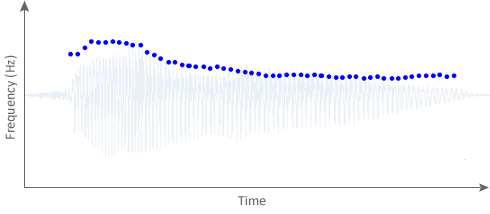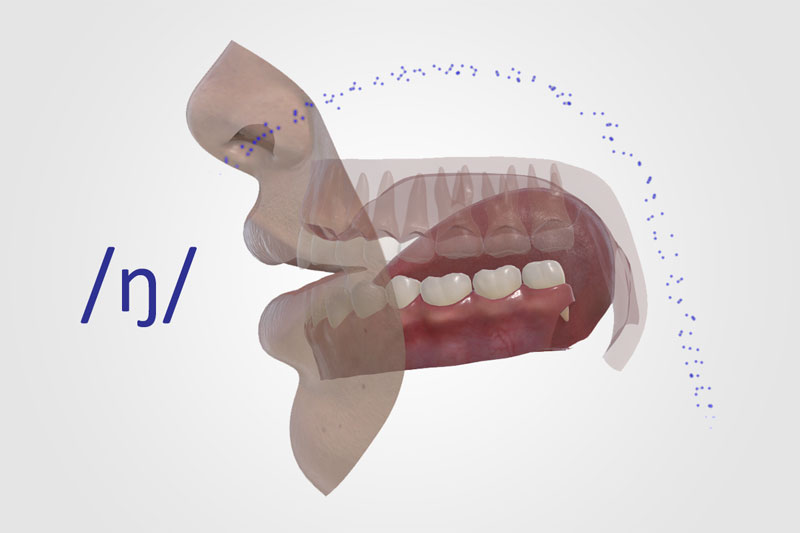The waveforms featured in Pronunciation Coach 3D are useful for viewing speech rate, loudness and pitch. They also show the difference between voiced-voiceless consonants and vowel sounds.
Pitch
The pitch of the voice refers to how high or low the note produced by the vibrating vocal folds appears to be. The faster the vocal folds vibrate the higher the pitch. The slower they vibrate the lower the pitch. The pitch of the note is measured by its frequency in Hertz (Hz), which represents the number of vibrations per second.
The average pitch for the spoken voice varies from person to person. A child's speech ranges from 250-400 Hz, whereas adult females speak at around 200 Hz on average, and adult males around 125 Hz. On the pitch display, frequency (represented by blue dots) is plotted vertically and time horizontally.

Pronunciation Coach 3D
Pronunciation Coach 3D uses state-of-the-art computer animation and 3D modelling techniques to illustrate how to pronounce all of the sounds in the English language, and how to combine these sounds to pronounce any word or sentence.
Read more...
Speech intensity (loudness)
Whereas pitch is determined by the speed of the vibrations of the vocal folds, loudness is determined by the strength of their vibration. This is controlled mainly by the force with which the air from the lungs is allowed to pass through the voice box (larynx). It is important to understand that the pitch of the voice can remain constant whilst the loudness can be varied. In other words, it is possible to keep the vibration frequency the same but to increase the strength of the vibration by forcing through more air.
Loudness is measured in decibels (dB). A whispering person speaks at a loudness of around 10 dB. In comparison, someone shouting may be around 70-80 dB. On the speech waveform display, intensity is plotted vertically and time horizontally.
